Nikon D750 Review
Nikon D750 Introduction
The Nikon D750 starts a new line of full-frame HD-DSLR, one which is optimized for video above photography. This is obviously a serious turn for Nikon and one which is aimed at grabbing hold of the video market using technology primarily developed for photography.
The core of the Nikon D750 is a 24 megapixels CMOS sensor paired with a powerful EXPEED 4 processor. Compared to the photography-oriented D610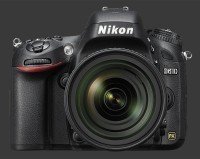
Nikon D610, the new D750 uses an anti-alias filter that reduces both maximum image details and downscaling artifacts, the latter being common for video.
Having the latest EXPEED 4 processor gives the D750 image processing features of the higher-end D810 reviewed here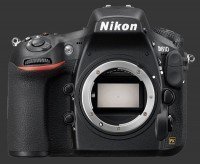
Nikon D810, matching its ultra-flexible image parameters. The D750 sensor has a higher native sensitivity range of ISO 100 - 12800 and is expandable to ISO 50 - 51200.
The Nikon D750 remains a professional photography camera yet it packs more video-friendly features. It can capture full 1080p HD at 60 FPS and output a clean signal over HDMI. It supports a sophisticated full-time autofocus system, video manual-controls, external stereo sound input and stereo audio output.
Nikon D750 Features
Sensor
- 24 Megapixels CMOS sensor
- Full-Fame Nikon FX format
- Anti-Alias filter
- Standard ISO 100 - 12800 range
- Expanded ISO 50 - 51200 range
- Highly customizable Auto ISO
- JPEG, RAW or JPEG+RAW Output
- Built-in Dust-Reduction
- Nikon F-mount
Exposure
- PASM exposure modes
- 1/4000s - 30s Shutter-speed, plus Bulb
- EC, ±5 EV, 1, 1/2 or 1/3 EV steps
- FC, -3...+1, 1, 1/2 or 1/3 EV steps
- Matrix (Multi-Segment), Highlight Weighed, Center-Weighed, Average & Spot metering
- AEB or Flash Bracketing, 2 to 9 Frames, ±1 EV
- Exposure Fine-Tuning, ±1 EV, 1/6 EV steps
- ½ or 1/3 EV Exposure & ISO steps
- Built-In HDR, 2 shots, 4 blending levels, single image or series
- 1/250s Flash-Sync speed
Focus & Drive
- 51-Point Phase-Detect autofocus, 15 cross-type
- Single-Shot, Continuous or Manual focus-drive
- Single-Point, Group, Dynamic-Area or Auto focus-point
- 3D Tracking AF with OVF and Live-View
- Contrast-detect AF for Live-View and video
- Face-Detect AF in Live-View
- Optional AF-Assist lamp
- Optional Autofocus Fine-Tuning
- 6.5 FPS Drive, Max 87 JPEG or 15 RAW
- Quiet-Shutter with delayed mirror-return
- Quiet-Shutter Continuous with slow mirror-return
- Customizable Self-Timer, 1-9 Shots, 2-20s Start Delay, ½-3s Interval
- Mirror Lock Up and Exposure-Delay, 1-3s
- Multiple-Exposure, 2-3 shots, optional Auto Gain
- Time-Lapse Video, 1s-10m interval, 1m-8h capture time
- Internal-Timer, 1-9999 times, 1-9 shots, 1s-24h interval, delayed start 1m-23h59m
- Optional Exposure-Smoothing for Interval-Timer and Time-Lapse
Controls
- Dual control-dials
- Optional Easy ISO or EC control
- Combined configurable AE-L/AF-L button
- Modal drive-mode dial
- Customizable Function button
- Customizable DOF-Preview button
- Direct Video-Record button
- Live-View trigger
- Focus-Point lock
Images Parameters
- AutomaticTwo types: Normal & Preserve Warm Colors, Preset, Kelvin and Custom6 Memories WB
- White-Balance fine-tuning, 2-axis25-steps A-B, 49 steps G-M
- 7 Built-in Picture Styles
- Automatic or manual Sharpness, 37 steps
- Automatic or manual Clarity, 41 steps
- Automatic or manual Contrast, 25 steps
- Automatic or manual Saturation, 25 steps
- Manually adjustable Hue, 25 steps
- Manually adjustable Brightness, 13 levels
- Virtual WB Bracketing, 2-9 Frames, 3 step sizes
- Virtual ADL Bracketing, 2-5 Frame, 1 step size
- Optional High-ISO Noise Reduction, 3 levels
- Optional Long Shutter Noise Reduction
- Optional Automatic Distortion-Correction
- Optional Vignetting-Correction, 3 levels
- Optional Dust-Off reference photo
- Optional Active D-Lighting (ADL), 4 levels
Video
- 1920x1080 @ 60 FPS 16:9 HD Video
- 1280x720 @ 60 FPS 16:9 HD Video
- Quicktime H.264, 2 quality levels
- Simultaneous uncompressed 1080p HDMI output and compressed SDXC recording
- Built-in stereo microphone
- Auto or manual Audio-Sensitivity, 20 levels
- Wide or Vocal Frequency-Response
- Optional Wind-Filter
- Stereo sound-input mini-jack
- Stereo sound-output mini-jack
Viewfinder & Displays
- Optical Viewfinder, 100% coverage, 0.7X magnification
- 3.2" Tilting LCD, 1.2 Megapixels
- Illuminated top LCD status display
- Single-Axis Digital-Level in OVF
- Optional DOF-Preview in OVF
- Dual-Axis Digital-Level in Live-View
- DOF-Preview in Live-View
- Optional DX cropping frame
- Optional 1.2X cropping frame
- Optional composition grid
- Sound-Level monitor
Body & Construction
- Weather-sealed body
- Built-in pop-up flash (GN 13)
- Hot-Shoe for external lighting
- Wired remote connector
- Wireless remote receiver
- Dual SDXC Memory card slots
- Proprietary Lithium-Ion battery
- Metal tripod mount
- USB 3.0 port
- Built-in WiFi
Externally, the D750 is extremely familiar to Nikon users. Its body and functionality is nearly identical to that of the D610, except with image-parameters taken from the D810. Only the column of buttons to the left of the LCD has been reorganized, so no need to write almost the same thing here too. See the relevant page in the D600 review for Usability. The LCD on the D750 now tilts which is new for Nikon full-frame DSLRs.
Nikon D750 Usability - How easy is it to use?
The D750 is a very usable DSLR. Its dual control-dial and flexible settings make most common photography features accessible via physical dials and buttons. Nikon DSLRs have a mostly intuitive interface, the main exception being their unusual Auto ISO behavior.
Auto ISO is selectable as a behavior of ISO configuration, not as a separate settings as it is on other brands of cameras. Oddly, Nikon takes exception to this in fully Automatic mode where the D750 behaves just like other DSLRs.
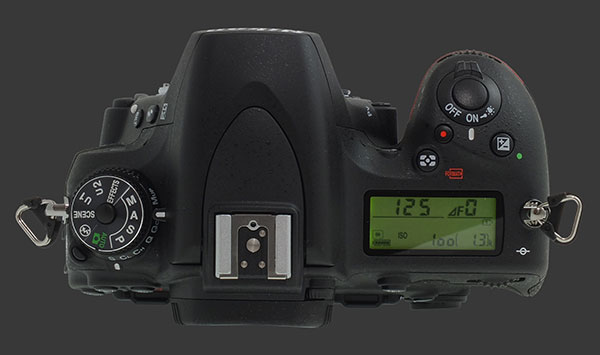
All buttons on this DSLR are firm and all dials have good detents. Both the mode-dial and drive-mode dial are locked to prevent accidental changes. The drive-mode dial has no less than 7 positions, including one for Mirror Lock-Up. This is great for those with a remote trigger. People without one will prefer to use the Exposure-Delay mode which is unfortunately hidden deep in the menu system.
This camera has a deep hand-grip which feels very comfortable and secure. The D750 itself feels quite solid and is relatively heavy. Even the compartment door covers and LCD hinges are relatively sturdy. The latter is certainly a week-point of the camera when it comes to durability but provides additional flexibility while framing with Live-View. The LCD tilts down 90° or up 135°.
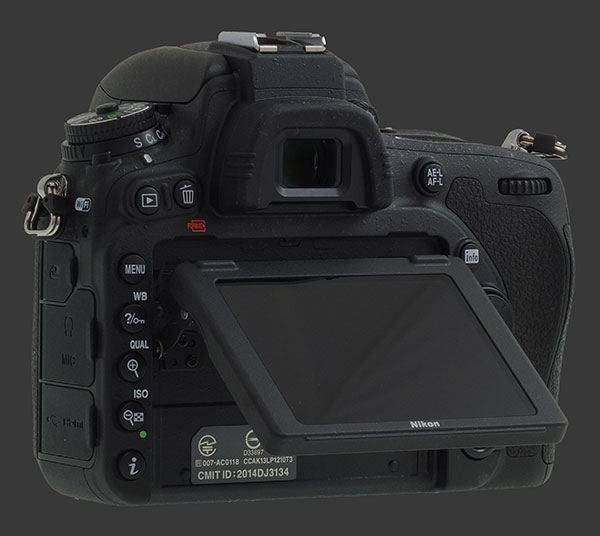
To the left of the rear LCD, the vertical buttons now are: Menu, WB, Image-Quality, ISO and I. Notice there is no longer direct access to Image-Parameters. Instead, I, brings up a short menu of functions which includes those parameters among several other less-used ones.
Overall, the D750 is easy to use and suffers from no major usability issues. Even with gloves on, this DSLR is easy to operate. See the Nikon D600 Usability page for more details.
Nikon D750 Performance - How well does it take pictures?
Ultimately, it is the image quality that makes a camera worth buying. For a digital SLR, image quality greatly depends on the lens used. While color, noise, contrast and exposure are properties of the camera, distortion, vignetting and chromatic aberrations are properties of the lens. Sharpness depends on the weakest link. So, the camera cannot capture more details than the lens lets through. Conversely, a lens can transmit a greater amount of details than the sensor can capture.
The Nikon D750 is not terribly demanding on lenses. Not only is its resolution modest by full-frame standards, the anti-alias filter ensures that the finest details get blurred before reaching the sensor. Even with a G lens, images never get tack sharp. As discussed further down, Sharpness can be adjusted in very fine-steps but it cannot add real details.
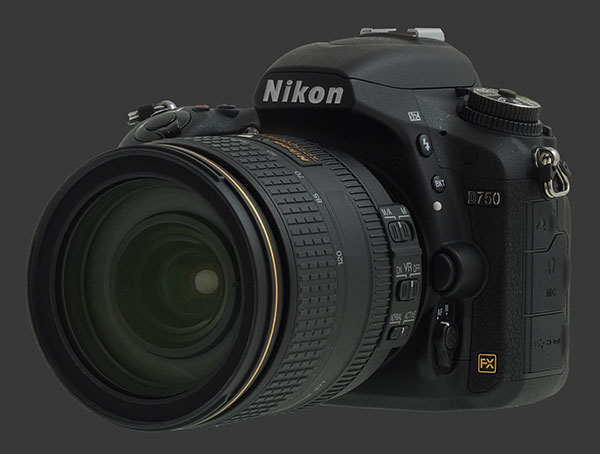
Image noise of the D750 is quite low. While it does not match with the class-leading D610, it gets really close. Until ISO 400, noise is invisible. It becomes barely noticeable at ISO 800 and 1600 which still allows for large maximum-size prints. Fine details are resolved nicely there and, with noise-reduction off, remain consistently sharp.
As expected, ISO 3200 shows some obvious noise yet it barely intrudes on fine-details. One could pull-of some relatively large prints without much trouble. ISO 6400 is visibly noisier, mostly in terms of luminance. Print sizes must be restricted some more to avoid a grainy look.
The last standard ISO, 12800, has rather apparent noise. Still, it is mostly luminance but there is some chroma-noise in there too. Print sizes remain very usable if limited to a medium-size. The D750 does an impressive job at maintaining details despite such high noise-levels.
ISO 25600, the first high-ISO in the expanded range can only be described as noisy. There is lots of luminance and chroma noise. Still, this level remains usable for small prints as details do not get very soft. ISO 51200, the top expanded sensitivity, looks like a disaster at 100% but, in a squeeze, can still manage a small recognizable print. This is a pretty good performance.
Dynamic-range of the Nikon D750 is very good. Again, it does not quite match that of the class-leading D610, yet it holds its down really well. Of course, one has to stay between ISO 50 and 200 get the maximum range. Above that, noise starts limiting shadow details which reduces how much tonality is captured.
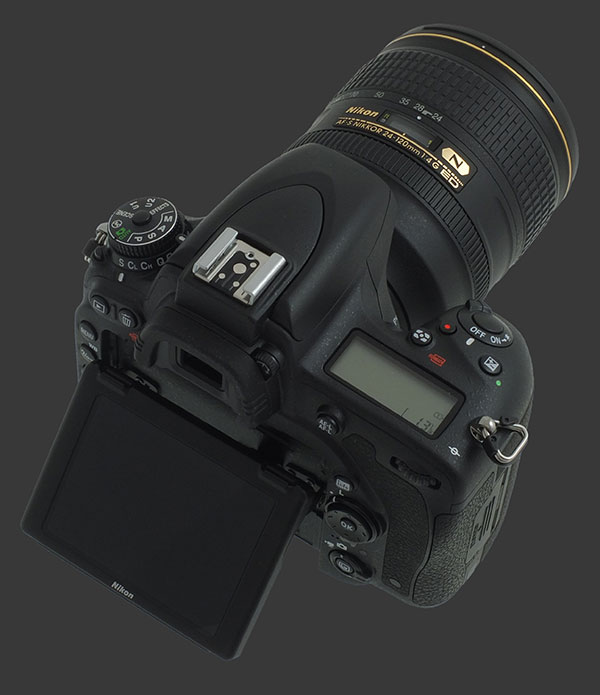
In-camera sharpening is set on a scale going from 0 to 9 with ¼ steps. Be sure to understand that this scale is completely arbitrary and Nikon could have labelled it 0 to 36, 1 to 37 or any other range. The importance is that there are 37 different levels of sharpness, ranging from incredibly soft to visibly over sharpened. The optimal setting is at 4 which delivers maximum sharpness without artifacts. ±¼ does not make much difference, really.
Image parameters provide extremely fine control over color-rendition. While there are 7 Picture-Styles, Neutral is the closest to reality and Standard is slightly over-saturated but not overly so. To improve upon Neutral, reduce Saturation to -½ and shift Hue to +¾. The default Contrast is slightly harsh and images look more natural with it at -¾. There is plenty of latitude and room for personal taste.
There is a new Clarity image-parameter which can be set ±5 in ¼ steps. This allows it 41 possible values, the most of any parameter. What it does is expand mid-tone contrast, while compressing shadows and highlights. A JPEG has a fixed range limited by 8-bits per-component, so there is no way around this. Still, for most images whose main subject fall in mid-down, it gives a sharper look. A setting of +1½ produces very nice results without looking over-processed.
Having introduced the new Highlight Weighed metering, Nikon modified their Matrix metering more dramatically than between other models. The former is extremely conservative and avoids blowing highlights. This, naturally, causes exposures to be rather dark with scenes of high contrast. It also means that a small composition-shift, to include or exclude a particular highlight, can cause exposure to jump surprisingly.
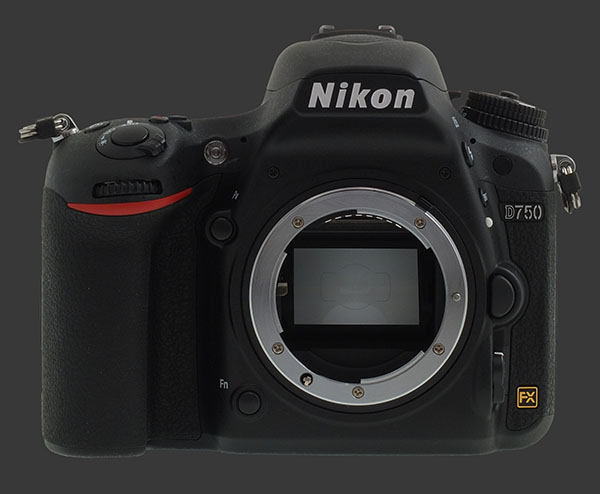
Matrix metering, on the other hand, use more even weights, staying very consistent for similar compositions of the same scene. This can be seen as more predictable but also easily causes highlights away from the center to be clipped. Neither system is perfect but Highlight Weighed metering produces usable images more often while Matrix produces more print-ready ones.
Automatic white-balance has clearly taken a hit with the new image-processing. Although it is good outdoors in bright light, it is far less reliable than usual. It struggles under artificial light where it often leaves a orange tint. There are two Auto settings which vary in how they deal with the warm color-cast typical of artificial light. One to correct it, the other not to. Unfortunately, both fail indoors too often. This is the only true weakness of the D750.
The Nikon D750 is generally responsive. Button and dials get an instant response most of the times. The shooting buffer is relatively shallow though, so when it gets busy, it takes some time for an image to appear when entering Playback mode. The performance of this DSLR is characterized by the following numbers:
- Power On: Instant. Excellent.
- Power Off: Under ½s. Excellent.
- Autofocus: Below ¼s in moderate to good light, rarely above ½s in low-light. Very impressive.
- Focus Confirm: Nearly instant for both autofocus and manual focus. Excellent.
- Shutter-lag: Instant followed by extremely short black-out. Extremely good.
- Shot-to-Shot Speed: Almost ¼s. Awesome.
- Instant Review: At least ¾s. Below average.
- Playback Mode: Instant to exist. Variable to enter. Below average.
This full-frame DSLR delivers some very fast performance but also a few below-par numbers. Focus-speed, shutter-lag and black out are all top-notch. The only issues have to do with reviewing images, either immediately or entering Playback mode. While noticeable, this is a minor problem at best.
This camera features automatic distortion correction based on pre-programmed lens data. Due to the nature of optical distortion, parts of the captured image get cropped, making precise framing impossible. Enabling it also slows the D750 down by adding almost ½s to the Instant Review delay.
There is also an optional Vignetting Control feature which does not affect camera performance. Unfortunately, this one is not profile-based and simply applies the selected level of correction. Options are Off, Low, Normal and High. While vignetting is actually very easy correct in software without detriment to image quality, we cannot recommend using this feature. Vignetting varies by lens, focal-length and aperture, so it would be considerably too much work to keep adjusting Vignetting Control according to constantly changing parameters.
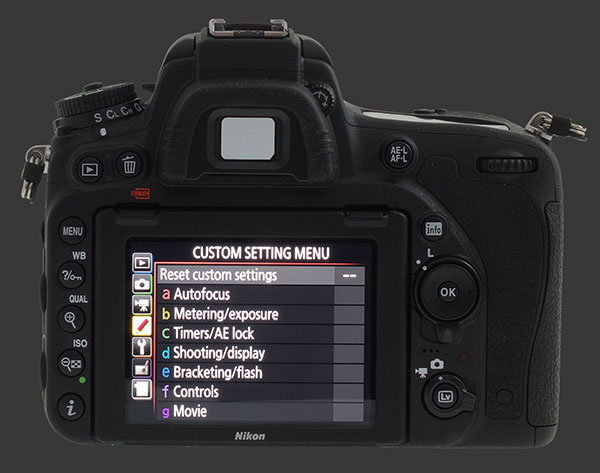
The 51-point autofocus system used on the D750 is extremely fast. It slows a little in very low-light but remains well ahead of most DSLRs. In continuous autofocus mode, the camera manages to keep up well with moving subjects. The new AF system on this model has been slightly improved other the D810 and is now sensitive to -3 EV, just one stop behind the leading camera.
Battery-life is excellent, achieving 1230 shots-per-charge according to the CIPA standard. Keep in mind that, as usual, this number accounts for 50% flash use but not video recording and extra use of the rear LCD.
Nikon D750 Conclusion
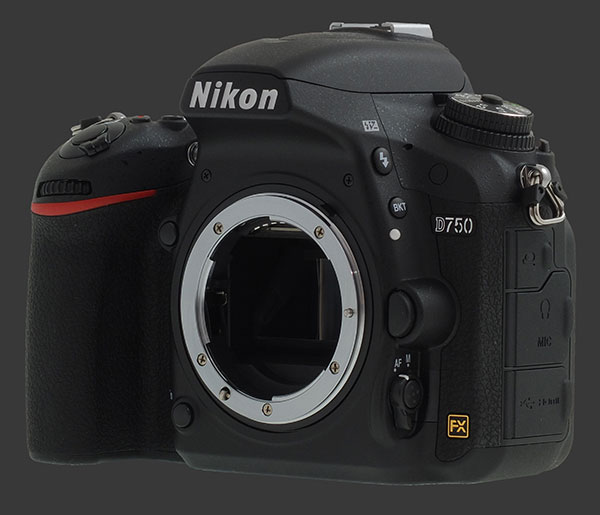
The Nikon D750 is a tough digital camera to peg. On one side, it delivers what is expected of a full-frame DSLR, namely high image-quality and fast speed. On the other, it is out-classed by both the D810 and D610 in terms of resolution and dynamic-range. It certainly has a few additional capabilities over the latter and more AF sensitivity than either one, yet it is a small step back in terms photography output.
With those caveats in mind, the D750 pushes video performance forward one step. Free lunch is not available yet! The Nikon D750 captures smooth full 1080p HD video at 60 FPS with stereo sound, including flexible sound parameters first seen on the D810. Its anti-alias filter and new electronic shutter allow it to produce video with fewer artifacts than most its peers. Plus, the tilting LCD makes framing easier.
This DSLR delivers low-noise images with a good dynamic range. Both Matrix and new Highlight Weighed metering patterns offer excellent compromises which handle almost any scene. Color-rendition is uniquely flexible with a class-leading number of parameters which can produce output to any taste, from subdued to surrealistic looks with innumerable variants in between. The only issue is a poor automatic white-balance system. It can easily be worked around thanks to sophisticated WB controls.
Overall, the Nikon D750 provides a new compromise, one which is certain to appeal those who desire one camera and of lens to do both photography and videography.
 |
Please Support Neocamera
All information on Neocamera is provided free of charge yet running this website is a huge endeavor. Purchases made via affiliate links found throughout the site help keep it running and up-to-date. There is no additional cost to you, so please consider buying via these links to our affilates:
Thank you for your support!
Nikon D750 Highlights

Sensor-Size: 36 x 24mm

Actual size when viewed at 100 DPI
| 24 Megapixels DSLR | ISO 50-51200 |
| Nikon F Mount 1X FLM | Shutter 1/4000-30s |
| 100% Coverage Extra Large Viewfinder | Full manual controls, including Manual Focus |
| 2 Axis Digital Level | Custom white-balance with 2 axis fine-tuning |
| Weatherproof | Spot-Metering |
| Built-in Dust Reduction | Hot-Shoe |
| 6.5 FPS Drive, 87 Images | Stereo audio input |
| 1920x1080 @ 60 FPS Video Recording | Lithium-Ion Battery |
| 3.2" LCD 1.2 Megapixels | Secure Digital Extended Capacity x 2 |
Updates
2025.11.13

Best Gifts for Photographers in 2025 by Budget
The annual Neocamera Photography Gift Guide updated to 2025. Find great gifts for photographers with any price budget.
2025.07.07

Stellar Photo Recovery Review
Review of Stellar Photo Recovery V12. This Windows and MacOS software can recover photos and videos in a huge number of formats from memory cards, USB drives, SSDs and HHDs.
2025.05.14

Huion Kamvas 13 Gen 3 Review
In-Depth review of the Huion Kamvas 13 Gen 3 Pen Display Tablet for photographers and graphic artists.
2025.01.18

Fujifilm GFX 2025 Lens Roundup
Lens Review roundup of Fujifilm GFX Medium-Format lenses. Quality, performance and handling of the GF20-35mm F/4R WR, GF30mm F/3.5 Tilt-Shift and the GF55mm F/1.7.
2024.11.18

Best 2024 Photography Gifts for Every Budget
Great gifts for photographers and photo enthusiasts selected for every budget among the best products of 2024.
2024.08.07

Eye Protection Tips for Professional Photographers
The four main considerations for professional photographers regarding eyewear.
2024.07.14

Fujifilm X100VI Review
Flagship fixed-lens compact digital camera with a 40 MP sensor and Image-Stabilization, a first for the series. Retro design featuring dual control-dials, plus direct ISO, Shutter-Speed and EC dials. Its hybrid viewfinder can switch between EVF and OVF mode.
2024.05.09

Fujifilm GFX100 II Review
Flagship 102 Megapixels Medium-Format Mirrorless Digital Camera with 8-Stop 5-Axis IBIS, 8 FPS Drive, 8K Video and 400 MP Super-Resolution capture in a weatherproof and freezeproof body with dual control-dials and dual memory-card slots.
2024.04.03

Fujifilm X-T5 Review
Newest Fujifilm flagship boasting a 40 MP APS-C sensor, 5-axis IBIS with 7-stop efficiency, 15 FPS continuous drive, 6.2K Video capture, dual control-dials and dual SDXC UHS-II slots in a sturdy weatherproof and freezeproof body.
2023.11.20

Best Digital Cameras of 2023
Find out which are the Best Digital Cameras of 2023. All the new Mirrorless Digital Cameras from entry-level to high-end professional.
2023.07.10

Fujifilm X-H2 Review
40 Megapixels APS-C Hybrid Mirrorless Digital Camera with 7-stop IBIS. Fastest shutter ever and 8K video capture. Large builtin EVF with 0.8X magnification and 5.8 MP, plus an Eye-Start Sensor. Packed with features and large number of controls in a weatherproof and freezeproof body.
2023.05.07

Sony FE 20-70mm F/4G Review
Review of the unique Sony FE 20-70mm F/4G lens. The optical zoom of this lens spans ultra-wide-angle and medium focal-length coverage, making it one of the most versatile Full-Frame lenses on the market.











